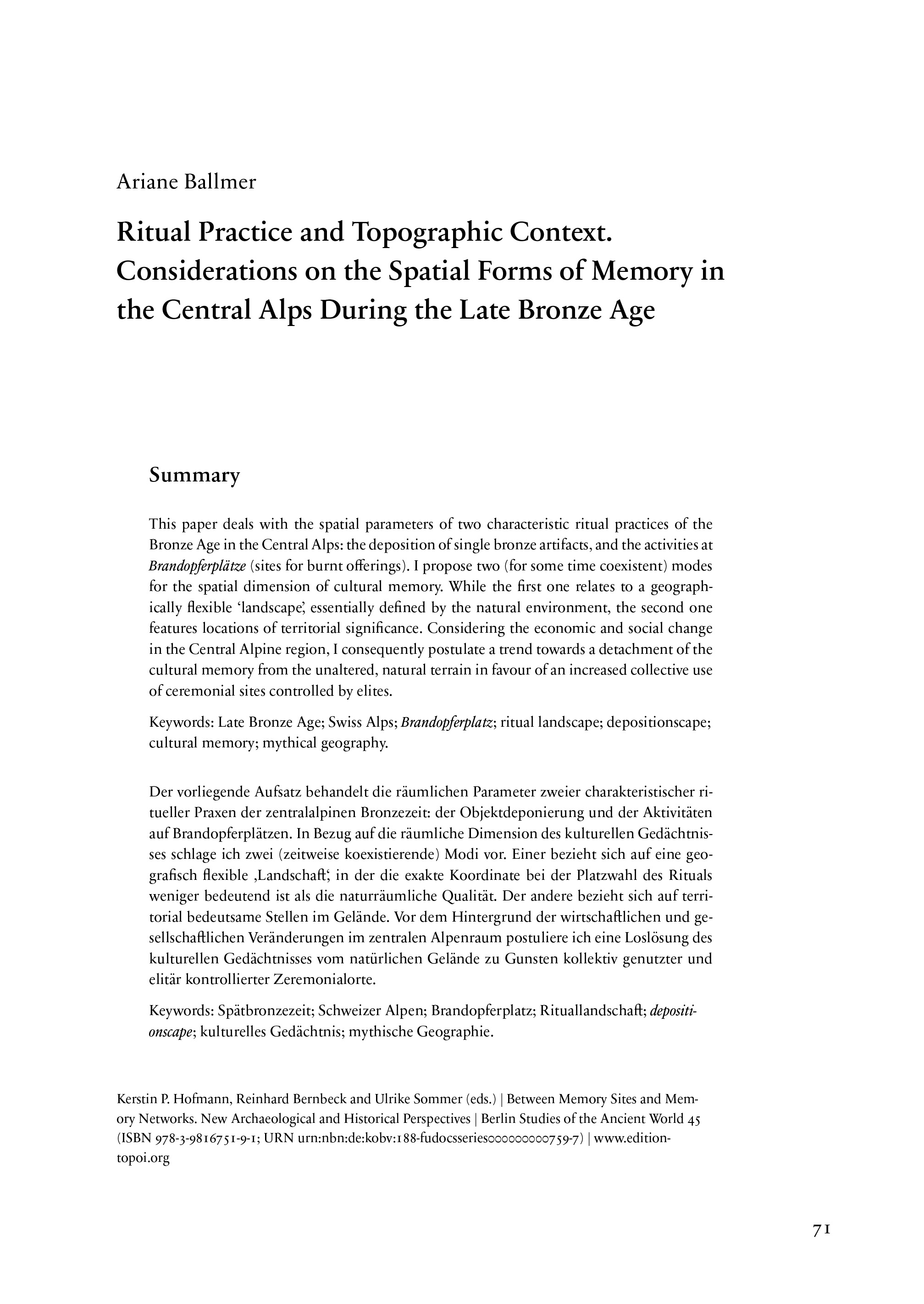Ritual Practice and Topographic Context. Considerations on the Spatial Forms of Memory in the Central Alps during the Late Bronze Age
This paper deals with the spatial parameters of two characteristic ritual practices of the Bronze Age in the Central Alps: the deposition of single bronze artifacts, and the activities at Brandopferplätze (sites for burnt offerings). I propose two (for some time coexistent) modes for the spatial dimension of cultural memory. While the first one relates to a geographically flexible ‘landscape’, essentially defined by the natural environment, the second one features locations of territorial significance. Considering the economic and social change in the Central Alpine region, I consequently postulate a trend towards a detachment of the cultural memory from the unaltered, natural terrain in favour of an increased collective useof ceremonial sites controlled by elites.
Der vorliegende Aufsatz behandelt die räumlichen Parameter zweier charakteristischer ritueller Praxen der zentralalpinen Bronzezeit: der Objektdeponierung und der Aktivitäten auf Brandopferplätzen. In Bezug auf die räumliche Dimension des kulturellen Gedächtnisses schlage ich zwei (zeitweise koexistierende) Modi vor. Einer bezieht sich auf eine geografisch flexible ,Landschaft‘, in der die exakte Koordinate bei der Platzwahl des Rituals weniger bedeutend ist als die naturräumliche Qualität. Der andere bezieht sich auf territorialbedeutsame Stellen im Gelände. Vor dem Hintergrund der wirtschaftlichen und gesellschaftlichen Veränderungen im zentralen Alpenraum postuliere ich eine Loslösung deskulturellen Gedächtnisses vom natürlichen Gelände zu Gunsten kollektiv genutzter und elitär kontrollierter Zeremonialorte.

